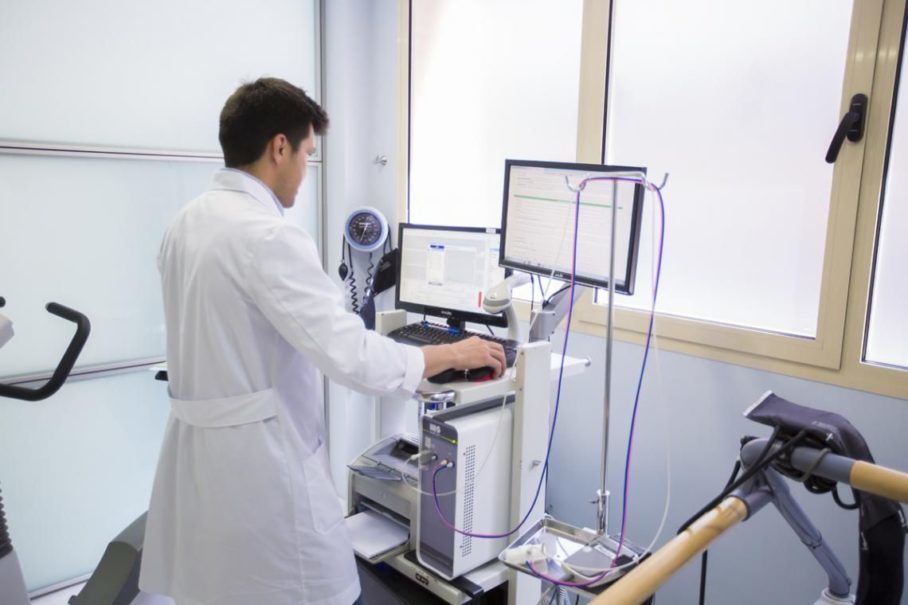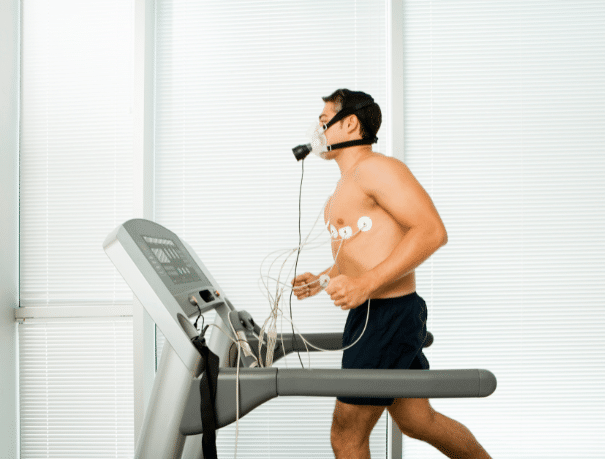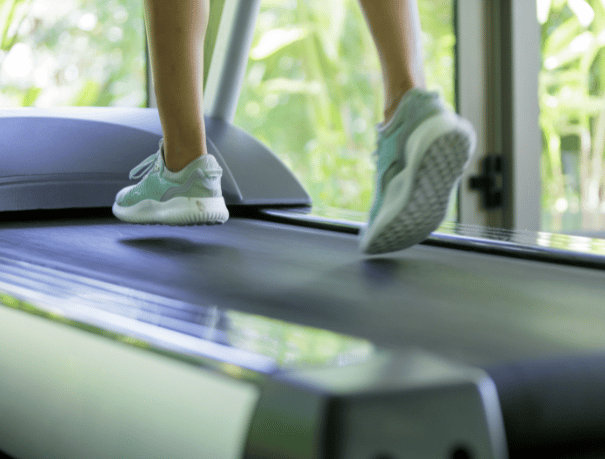Main goal
What does it consist of?
The essential objectives of a stress test are to diagnose or rule out cardiac pathologies and to assess the functional capacity of the athlete, that is, the ability of an individual to make efforts. After the procedure, data is obtained that allows medical advice on training, determining the recommended exercise intensities to achieve an improvement in sports performance.
At Paracelso Sagasta, we offer three types of stress tests: the conventional stress test, the stress test with aspirated gases (gas analysis), and the lactate stress test.

Process
How it is performed?
The stress test is performed by walking or pedaling on a treadmill or stationary bike, while heart rate, blood pressure, and breathing are examined. The test lasts approximately 15 to 30 minutes.
- Conventional stress test: consists of walking on a treadmill or pedaling on a stationary bike while heart activity and blood pressure are recorded.
- Stress test with aspirated gases: known as gas analysis, it consists of walking on a treadmill or pedaling an exercise bike with a mask placed over the nose and mouth to obtain parameters related to gas exchange (oxygen and carbon dioxide concentrations). of carbon during inspiration and expiration) and ventilation during a session of effort.
- Lactate stress test: measures lactic acid (lactate) levels during physical exercise and its concentration in the blood, providing information on energy metabolism at different workloads. This test is useful to know the athlete’s anaerobic power and thus be able to determine the training loads.

Test preparation
Instructions
Before the test, avoid large meals.
Come with your usual sports clothes and shoes.

The specialists who will assist you in Paracelso Sagasta
A team of professionals who take care of you

The opinion of experts
The Paracelso Sagasta blog
You will find advice from our professionals on how to improve your health and information on the latest technologies applied in the medical health sector.
 Health and advice
Health and advice
Make 2025 your healthiest year: a guide to positive habits
 Health and advice
Health and advice
10 Tips for a healthy Christmas
 Health and advice
Health and advice
